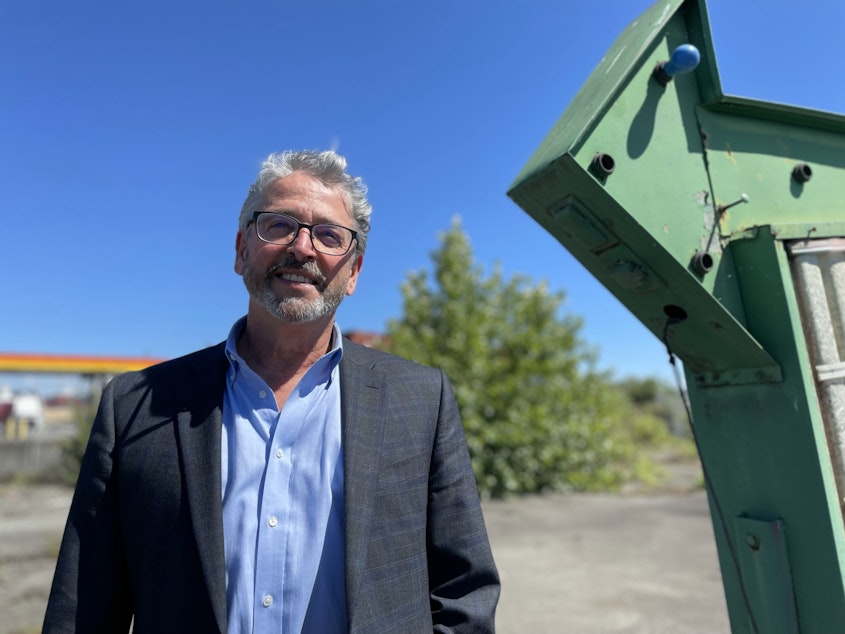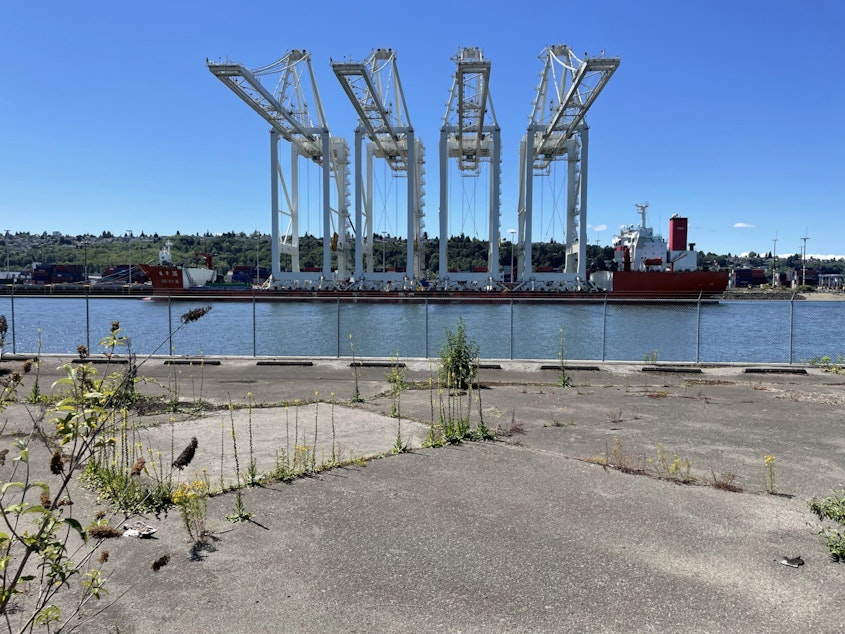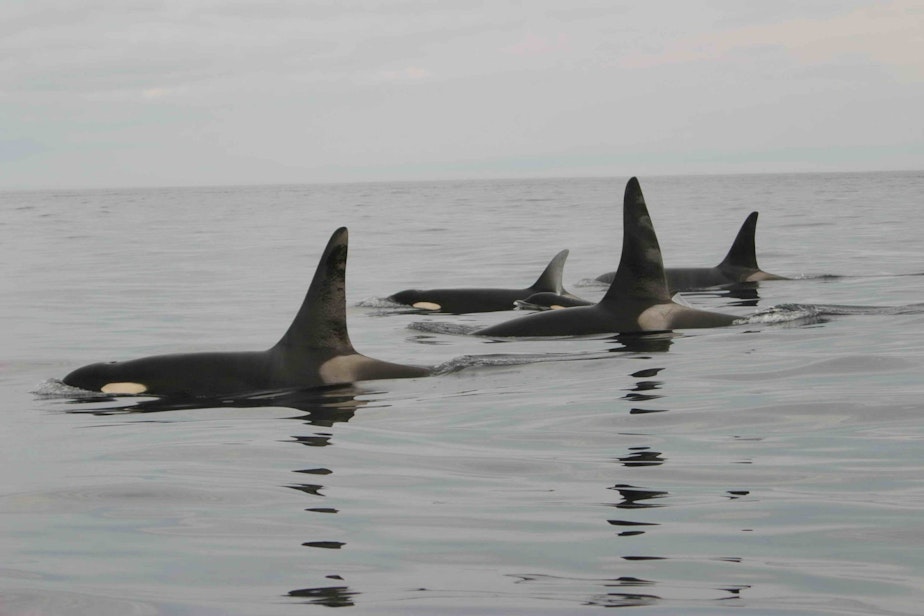Seattle’s port is greener than ever. That may not be enough.

The Port of Seattle finished unloading four giant white cranes from China late Monday. They’re among the biggest cranes in the world, and part of a major upgrade to Terminal 5, which includes new green infrastructure designed to reduce pollution.
But critics say it's hard to be green in an industry that's nowhere close.
Fred Felleman is the Port Commission's president, but he trained as a scientist. He wrote his master's thesis at the University of Washington on the feeding habits of killer whales.
When he first ran for office with the elected body that governs the Port of Seattle, he campaigned as a marine biologist and a reformer, someone who’d use science to balance job growth at the port with stewardship of the environment.
That commitment was put to the test when the port needed to upgrade Terminal 5, so it could accommodate bigger ships. The need – he says – was overwhelming.
“Without being big ship ready — we’re out of business,” Felleman says.

Sponsored
What Felleman and other environmentally-minded commissioners tried to do was make upgrades to the port as green as possible. They put a rail line right on the dock, so containers could be loaded directly from the ship onto trains, which are more fuel efficient than trucks. They made sure the new docks provided power, where ships could plug in, so they don’t have to idle just to generate electricity.
Fewer idling boats keeps the marine environment quieter, which is good for orca.
“So we can sort of have our commerce and killer whales, too,” Felleman said.
He also says bigger ships use less fuel to carry more goods, and someday they could even get a boost from sails mounted to the deck like ships of old.
But consumer demand continues to grow.
Sponsored
“The problem is, as the world grows and we become wasteful, shipping is growing," Felleman says. "And so we are looking at a very efficient means of transporting goods, but we’re moving a lot more goods.”
That contradiction has led some critics to accuse the port of greenwashing, touting small environmental achievements while core problems go unaddressed.

Stacy Oaks is an organizer with 350 Seattle, a non-profit environmental group. She used the example of providing electrical power at the dock, so that ships don’t have to idle. On the surface, it’s a good thing.
“I think in terms of health impacts, for the immediate community and workers, it is a win, because you’re taking out all that particulate matter and carcinogens that are coming out of those smokestacks, so it’s really important," she said.
Sponsored
But when it comes to slowing climate change, "it’s doing almost nothing,” Oaks says, because cargo ships burn fossil fuels, which contributes to climate change, and they burn most of their fuel out at sea.
“Unfortunately, we need to address the expansion elephant-in-the-room and maybe stop expanding things that are fossil fuel intensive until those other solutions are in place. And/or find other ways for us to not have to ship as many goods as far,” Oaks says.

The port is facing criticism below the waterline as well, where the killer whales live.
Sophia Ressler is a lawyer for the Center for Biological Diversity. Her organization is suing the Port and the Army Corps of Engineers because they’re dredging the Duwamish River to make room for bigger cargo ships at Terminal 5.
Sponsored
She says dredging stirs up all the toxic chemicals that have settled on the river bottom.
“Like if you were to walk into a pond, and it gets all mucky... it’s kind of the same thing. There will be those plumes of dirt and contaminants that are at the bottom of the water that start floating in the water that weren’t there before.”
And because it’s a Superfund site, she says those plumes of dirt contain high levels of PCBs and other chemicals, “which we know are really terrible for orcas and affect their reproductive abilities and their general health.”

The lawsuit asks the port and the corps to mitigate the impact on killer whales. Ressler says completely offsetting the negative impacts may not be possible.
Sponsored
But standing on the banks of the Duwamish River, looking at those giant cranes, former marine biologist turned port commissioner Fred Felleman remains optimistic these challenges can be met.
“The level of innovation associated with this business that people just see, maybe, as 'old school' – it’s remarkable," he says. "And it only gets better.”
The question is whether it can get better faster than it gets worse.




